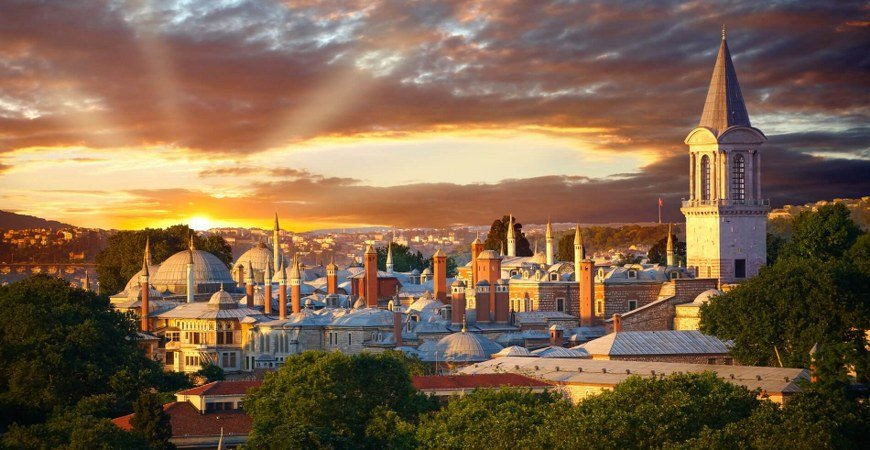
A Short Historıcal Sketch of Topkapi Palace – Chapter 1
A Short Historıcal Sketch of Topkapi Palace – Chapter 1,
In 1454, the year after the conquest of Constantinople, Mehmet II Fatih, that is the Conqueror, built his first palace in the Forum of Theodosius, where the Istanbul University is situated today. Jt was only some time after this that the Conqueror built his New Palace, the present Saray Museum, on the point of the city where the Byzantine Acropolis was situated. The earlier construction then became known as the Eski Saray, or Old Palace. This corner, which was once known as Zeytinlik because of the groves of olive trees which covered it and which is now famous as Saray Point, can truly be described as the most beautiful spot in a city distinguished amongst her peers for exceptional natural beauty. From this magic point, where the Mar-mara, the Bosphorus, and the Golden Horn come together, the eye sweeps over every part of the city, and out to the Princes Islands beyond. The towers and domes, the chimneys and columns of the Seraglio stand out like a majestic crown set upon the hill. They form a beautiful pattern whether viewed from sea or land and once seen can never be forgotten. The New Palace was built to a plan which tradition had already established for the abode of Turkish rulers. It grouped around a series of courtyards and gardens not only the living quarters of the sultan but also accommodation for the more important departments of state, and kiosks and other buildings housing the sultan’s entourage, each series of structures being in different style, the whole an expression of mature all Topkapi Palace, built in the years 1472 — 1478, is surrounded on the land side by a system of walls and towers which is known as the Sultans Fortifications, which connect on the seaside with the old Byzantine fortifications.1 The space enclosed by these walls is 699,000 sq. metres. Originally the New Palace was built to house the retinue of the Conqueror. The growing household of his son Bayezit necessitated the addition of a new kiosk, and from then on constant additions and alterations were made, especially during the reign of Suleyman the Magnificent (1520 — 1566), by which time the sultan’s household included five thousand souls. Last in the series of additions was the building constructed in the French style of the early nineteenth century in the reign of Abdul Mecit.
You can find more details about A Short Historıcal Sketch of Topkapi Palace in Chapter 2.